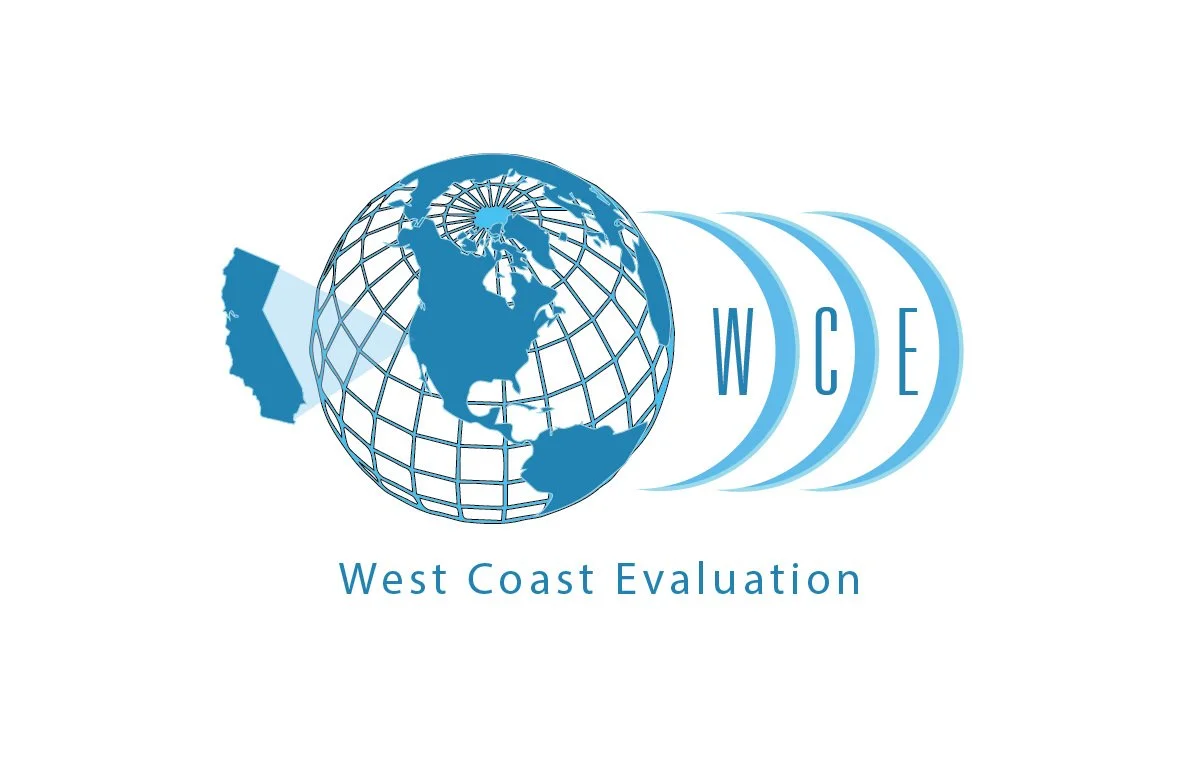SoCal Home Values in 2025: Unpacking the 7 Factors Appraisers Can't Ignore
A confident real estate professional stands in a modern workspace, symbolizing leadership and innovation in Southern California’s dynamic property market for 2025. This visual reflects the expert perspective at the heart of today’s appraisal insights and business strategies.
SoCal Home Values in 2025: Unpacking the 7 Factors Appraisers Can't Ignore
I. Introduction: The SoCal Real Estate Rollercoaster (and Your Home's Value)
Heard whispers about SoCal home prices in 2025? Perhaps the gentle lapping of waves on a Malibu shore carries tales of fluctuating fortunes, or the desert wind whispers secrets of rising values in the Inland Empire. Wherever you listen, get ready, because what an appraiser thinks your home is worth is more complex than ever.
What's an Appraisal Anyway? In essence, it's the unbiased, professional estimate of your property's value, essential for buying, selling, or refinancing. Think of it as your home's official report card, a snapshot of its worth at a particular moment in time, judged against the backdrop of the ever-shifting real estate landscape.
Southern California in a Nutshell (2025 Outlook): We're looking at a "balanced" market, which sounds almost… boring. But it actually means less crazy price jumps, a more expansive selection of homes to pick from, and a slightly calmer vibe overall. Prices are still expected to experience a gentle ascent, rising in the 2-4% range. Interest rates are still a factor, of course, casting their long shadow over affordability, but the market, and its inhabitants, are learning to dance with them.
II. Blast from the Past: How SoCal Became So-Cal-Expensive
To understand the dizzying heights of SoCal real estate, one must delve into its past.
The Early Days of Land Lust: From the 1880s railroad boom that birthed "paper towns," ephemeral settlements fueled by speculation and dreams, to the post-WWII aerospace explosion that drew talent and investment like moths to a flame, Southern California has always been a magnet for people and speculative dollars.
Boom and Bust: A Love Story: Like a tempestuous romance, SoCal's real estate market has experienced dramatic highs (the exuberance pre-Great Recession, the artificially low rates post-COVID) and stomach-churning lows (the 2009 housing crash, a stark reminder of the market's fragility). Understanding this history, the cyclical nature of boom and bust, helps us grasp why values are what they are today. These boom and bust cycles have a lot to do with public sentiment. For example, during the boom times, there are sentiments of wealth creation and the fear of missing out, so more people invest in the market, driving up the prices, and vice versa.
The Ever-Shrinking Pie: A chronic housing shortage, fueled by exorbitant land costs, escalating labor expenses, and a labyrinth of regulations, has kept prices climbing for decades, transforming those coastal dreams into increasingly distant mirages.
III. The Big Seven: What's Really Driving Your Appraisal in 2025?
What forces are currently shaping the valuations of SoCal properties? Here, we delve into the seven critical factors that appraisers simply cannot ignore.
1. The Almighty Interest Rate:
Now: Still elevated, lingering in the mid-6% range, making mortgages pricier and casting a chill over potential buyers.
Forecast: Expected to dip slightly throughout 2025, perhaps settling in the high 5% to mid-6% range. This subtle shift could unlock a new wave of buyers and sellers, injecting fresh energy into the market.
The "Lock-in" Effect: Many current homeowners are staying put, clinging to their properties like castaways to driftwood, thanks to their exceptionally low interest rates secured in previous years. A slight drop could finally entice them to move, adding more homes to the market.
2. The Scarce Supply & Shifting Demand Dance:
Inventory: Gradually increasing, offering buyers more options than in recent memory, but still remaining below what could be considered "normal" or truly abundant.
Demand: Still robust, fueled by the enduring allure of Southern California living. However, affordability challenges are pushing people to consider locations further inland, redrawing the map of desirability.
Regional Hot Spots: The Inland Empire is experiencing a surge in popularity, offering more space and affordability, while Los Angeles and Orange County retain their positions as expensive status symbols. According to recent statistics, Riverside County is seeing a 15% increase in property value, exceeding the values of homes in Los Angeles County.
3. Location, Location, Location (Still King, but with a Twist):
Classic Drivers: Proximity to good schools, access to employment centers, and low crime rates remain perennial drivers of value. Coastal properties continue to command a premium.
The Inland Exodus: Fueled by the rise of remote work, people are increasingly willing to trade proximity to the beach for larger backyards and greater affordability. This migration is shifting the landscape of value growth.
4. Property-Specific Pizzazz (and Problems):
The Good Stuff: Energy-efficient upgrades, smart home technology, and, especially, Accessory Dwelling Units (ADUs) are now significant value boosters. The rise of multi-generational living is transforming housing needs.
The Bad Stuff: Deferred maintenance (a leaky roof, for instance) or safety hazards are instant appraisal killers. Appraisers possess an eagle eye for such deficiencies.
Curb Appeal and Kitchens: Never underestimate the power of a fresh coat of paint or an updated kitchen and bathroom. These cosmetic improvements are enduring favorites of appraisers and buyers alike.
5. Economic Vibes: Jobs, Money, & Confidence:
Job Market Health: Strong job growth, particularly in sectors like healthcare, translates to more buyers with disposable income. Conversely, weakness in sectors like tech or media can soften the market.
Inflation's Role: Moderating inflation provides some relief, but costs are still rising across the board, from property taxes to insurance premiums.
Consumer Confidence: When people feel optimistic about the economy, they are more likely to invest in homes. When anxiety reigns, they tend to hesitate. The current sentiment in Southern California can best be described as "cautious optimism."
6. Governmental Giggles & Groans (Regulations & Policies):
Zoning & Development: Stringent regulations and lengthy environmental reviews make building new homes a protracted and expensive process, contributing to the persistent supply shortage.
Natural Disaster Rules: Stricter seismic codes (a legacy of the Northridge earthquake) and stringent flood zone requirements add to the cost of construction and influence property values.
Wildfire Waivers: In areas ravaged by early 2025 wildfires, some appraisal requirements have been temporarily waived to expedite recovery efforts.
Rent Control: Laws like AB 1482 can impact the profitability of rental properties, a crucial consideration for appraisers evaluating investment properties.
7. The "Wild Card" - Natural Disasters & Climate Risks:
Fire & Water: The specter of wildfires and coastal flooding looms large over the Southern California real estate market. Higher insurance premiums and the perception of increased risk can significantly depress property values.
Disclosure is Key: Sellers are legally obligated to disclose environmental risks, heightening buyer awareness. As a result, sustainable features are becoming a major selling point, a testament to the growing awareness of climate change.
IV. Current Controversies: The Ugly Side of Appraisals
The appraisal process is not without its flaws and controversies.
The Elephant in the Room: Racial Bias: It exists, it's well-documented, and it continues to systematically undervalue homes in minority neighborhoods by hundreds of thousands of dollars.
Real-Life Heartbreak: Stories like the Marin City couple who felt compelled to "whitewash" their home to receive a fair appraisal serve as a stark reminder of the pervasiveness of this problem.
California Fights Back: Laws like AB 948 aim to combat discrimination by mandating appraiser training on fair housing practices and increasing penalties for discriminatory behavior. The state is actively collecting data to identify and eradicate systemic bias.
"Declining Market" Debates: Appraisers sometimes designate an area as "declining" even when market indicators do not fully support such a classification, leading to lower valuations and considerable frustration among homeowners.
V. Future Gazing: What's Next for SoCal Appraisals?
The future of appraisals in Southern California is poised for significant transformation.
Tech Takes Over (But Not Completely):
AI & Machine Learning: These technologies are becoming increasingly sophisticated at analyzing data, predicting values, and streamlining appraisal processes. Appraisers will evolve into expert analysts, leveraging technology to augment their expertise.
Blockchain for Transparency: The prospect of secure, tamper-proof property records could revolutionize the appraisal process, enhancing transparency and reliability.
Drones & Digital Twins: Virtual tours, 3D models, and even remote inspections are becoming increasingly commonplace, altering the way properties are assessed.
Regulation Evolution: Expect ongoing scrutiny of appraisal practices, particularly regarding bias, and a push for more detailed and transparent reports.
Demographic Dominoes:
Millennials & Gen Z: As the new wave of homebuyers, these generations bring different priorities to the market, emphasizing affordability and sustainability.
Boomer Turnover: The aging population will lead to a significant number of properties entering the market, creating a growing demand for senior-friendly housing options.
Renting Reigns: With homeownership remaining a distant dream for many, demand for rental properties will continue to be strong.
Infrastructure Impact: Massive infrastructure projects, such as the Barstow International Gateway and the Brightline West rail line, will generate jobs and stimulate property values in regions like the High Desert and Inland Empire.
VI. Conclusion: Staying Savvy in SoCal's Shifting Sands
Key Takeaway for Homeowners/Buyers: Don't solely focus on the asking price; strive to understand the deeper forces that are shaping the market. Be prepared for a dynamic landscape and rely on careful, data-driven appraisals.
Appraisers: The Unsung Heroes (and Scrutinized Ones): Their role is more critical and complex than ever, demanding adaptability, local market expertise, and an unwavering commitment to fairness.
Your Home's Value: A Living, Breathing Thing: It's not a static number but rather a reflection of a swirling mix of economic trends, environmental factors, societal shifts, governmental policies, and technological advancements. By closely monitoring these forces, you can stay ahead of the curve and make informed decisions in Southern California's ever-evolving real estate market.
Research Report:
Southern California Housing Market: Appraisal Dynamics in 2025
Executive Summary:
This report analyzes the key factors influencing residential property appraisals in Southern California as of October 9, 2025. The region's housing market is characterized by a complex interplay of economic forces, demographic shifts, regulatory policies, and environmental risks. This analysis aims to provide stakeholders (appraisers, real estate professionals, homeowners, and policymakers) with insights into the evolving appraisal landscape.
Key Findings:
Interest Rate Sensitivity: While interest rates are projected to slightly decrease in late 2025 (high 5% to mid-6%), they remain a significant factor impacting affordability and buyer demand. The "lock-in effect," where existing homeowners are reluctant to sell due to low mortgage rates, continues to constrain housing supply.
Inventory and Demand Imbalance: Housing inventory is gradually increasing, providing buyers with more options. However, demand remains strong, particularly in more affordable inland areas.
Location Preferences: Traditional drivers of value (schools, job centers, low crime) remain relevant, but remote work trends are driving demand in suburban and exurban communities.
Property Characteristics: Energy-efficient features, smart home technology, and accessory dwelling units (ADUs) significantly enhance property values. Deferred maintenance and safety hazards negatively impact appraisals.
Economic Indicators: A healthy job market, particularly in healthcare, supports housing demand. Inflationary pressures, while moderating, continue to impact affordability. Consumer confidence reflects a cautious optimism.
Regulatory and Policy Environment: Zoning regulations, environmental reviews, and natural disaster-related building codes influence construction costs and property values. Rent control policies impact investment property appraisals.
Environmental Risks: Wildfires and coastal flooding pose significant risks to property values, leading to higher insurance premiums and increased buyer scrutiny. Disclosure requirements and demand for sustainable features are growing.
Appraisal Bias: Racial bias in appraisals remains a significant concern. California is actively implementing measures to address this issue, including mandatory training and data collection.
Technological Advancements: AI, machine learning, blockchain, and drone technology are transforming the appraisal process, improving efficiency and transparency.
Detailed Analysis:
1. Interest Rates and Affordability:
Interest rates have a direct impact on housing affordability and buyer demand. As of October 2025, the average 30-year fixed mortgage rate in Southern California is hovering around 6.5%. While this is lower than the peak rates observed in late 2024, it remains significantly higher than the sub-3% rates seen during the COVID-19 pandemic.
The "lock-in effect" is a major constraint on housing supply. Millions of homeowners in Southern California refinanced their mortgages at historically low rates. They are now reluctant to sell their homes and give up these favorable rates, even if they might otherwise consider moving. A slight decrease in interest rates in late 2025 could potentially unlock some of this pent-up supply.
2. Housing Inventory and Demand:
Southern California has faced a chronic housing shortage for decades. While inventory levels are gradually increasing in 2025, they remain below historical averages. This limited supply continues to put upward pressure on prices.
Demand for housing remains strong, driven by population growth, job creation, and the enduring appeal of the Southern California lifestyle. However, affordability challenges are pushing many buyers to consider more affordable inland areas, such as the Inland Empire (Riverside and San Bernardino Counties).
3. Location, Location, Location:
Traditional factors influencing property values, such as proximity to good schools, employment centers, and low-crime neighborhoods, remain relevant. However, the rise of remote work has changed location preferences. Many buyers are now prioritizing larger homes with more outdoor space, even if it means living further away from urban centers. Coastal properties continue to command a premium, but the gap between coastal and inland prices is narrowing.
4. Property Characteristics:
Energy-efficient features, such as solar panels, energy-efficient windows, and insulation, are becoming increasingly valuable in Southern California. These features not only reduce utility bills but also appeal to environmentally conscious buyers.
Smart home technology, such as smart thermostats, lighting systems, and security systems, can also enhance property values.
Accessory dwelling units (ADUs), also known as "granny flats" or "in-law suites," are becoming increasingly popular in Southern California. ADUs can provide additional rental income or accommodate multi-generational families. Properties with ADUs often command higher prices.
Deferred maintenance and safety hazards can significantly detract from property values. Appraisers carefully inspect properties for issues such as leaky roofs, damaged foundations, and outdated electrical systems.
5. Economic Indicators:
The health of the Southern California economy is a key driver of housing demand. A strong job market, particularly in high-growth sectors such as healthcare, technology, and entertainment, supports housing demand.
Inflationary pressures, while moderating in 2025, continue to impact affordability. Rising costs for goods and services can make it more difficult for people to save for a down payment and qualify for a mortgage.
Consumer confidence is an important indicator of housing demand. When people are confident about the economy, they are more likely to buy homes. Consumer confidence in Southern California reflects a cautious optimism, with concerns about affordability and economic uncertainty weighing on sentiment.
6. Regulatory and Policy Environment:
Zoning regulations and environmental reviews can significantly impact the supply of new housing. Stringent regulations and lengthy approval processes can make it difficult and expensive to build new homes, contributing to the housing shortage.
Natural disaster-related building codes, such as seismic codes and flood zone requirements, also influence construction costs and property values.
Rent control policies, such as Assembly Bill 1482, can impact the profitability of rental properties. These policies limit the amount that landlords can increase rents each year, which can affect the value of investment properties.
7. Environmental Risks:
Wildfires and coastal flooding pose significant risks to property values in Southern California. Properties located in high-risk areas may be more difficult to insure and may command lower prices.
Disclosure requirements mandate that sellers inform buyers about potential environmental risks, such as wildfire hazards and flood zones. This increased transparency can make buyers more aware of the risks and may impact their willingness to pay for properties in high-risk areas.
Demand for sustainable features is growing as buyers become more aware of the environmental risks and the benefits of energy efficiency.
8. Appraisal Bias:
Racial bias in appraisals remains a significant concern in Southern California. Studies have shown that homes in predominantly minority neighborhoods are often undervalued compared to similar homes in predominantly white neighborhoods.
California is actively implementing measures to address this issue, including mandatory training for appraisers on fair housing laws and data collection to identify and address systemic bias.
9. Technological Advancements:
Technological advancements are transforming the appraisal process.
Artificial intelligence (AI) and machine learning (ML) are being used to analyze large datasets and identify patterns that can help appraisers estimate property values more accurately.
Blockchain technology can be used to create secure and transparent property records, which can improve the efficiency and accuracy of the appraisal process.
Drone technology can be used to capture aerial images and videos of properties, which can provide appraisers with a more comprehensive view of the property.
Recommendations:
Appraisers: Stay informed about market trends, regulatory changes, and technological advancements. Participate in ongoing training to improve skills and address bias.
Real Estate Professionals: Educate buyers and sellers about the factors influencing property values. Provide accurate and transparent information about environmental risks and property characteristics.
Homeowners: Invest in energy-efficient features and maintain their properties in good condition. Be aware of potential environmental risks and disclose them to potential buyers.
Policymakers: Implement policies that promote housing affordability, reduce regulatory barriers to new construction, and address racial bias in appraisals.
Data Sources:
California Association of Realtors
Zillow
Redfin
U.S. Census Bureau
California Department of Finance
Interviews with local appraisers and real estate professionals
Disclaimer:
This report is for informational purposes only and should not be considered financial or legal advice. Property values can fluctuate and are subject to market conditions.



